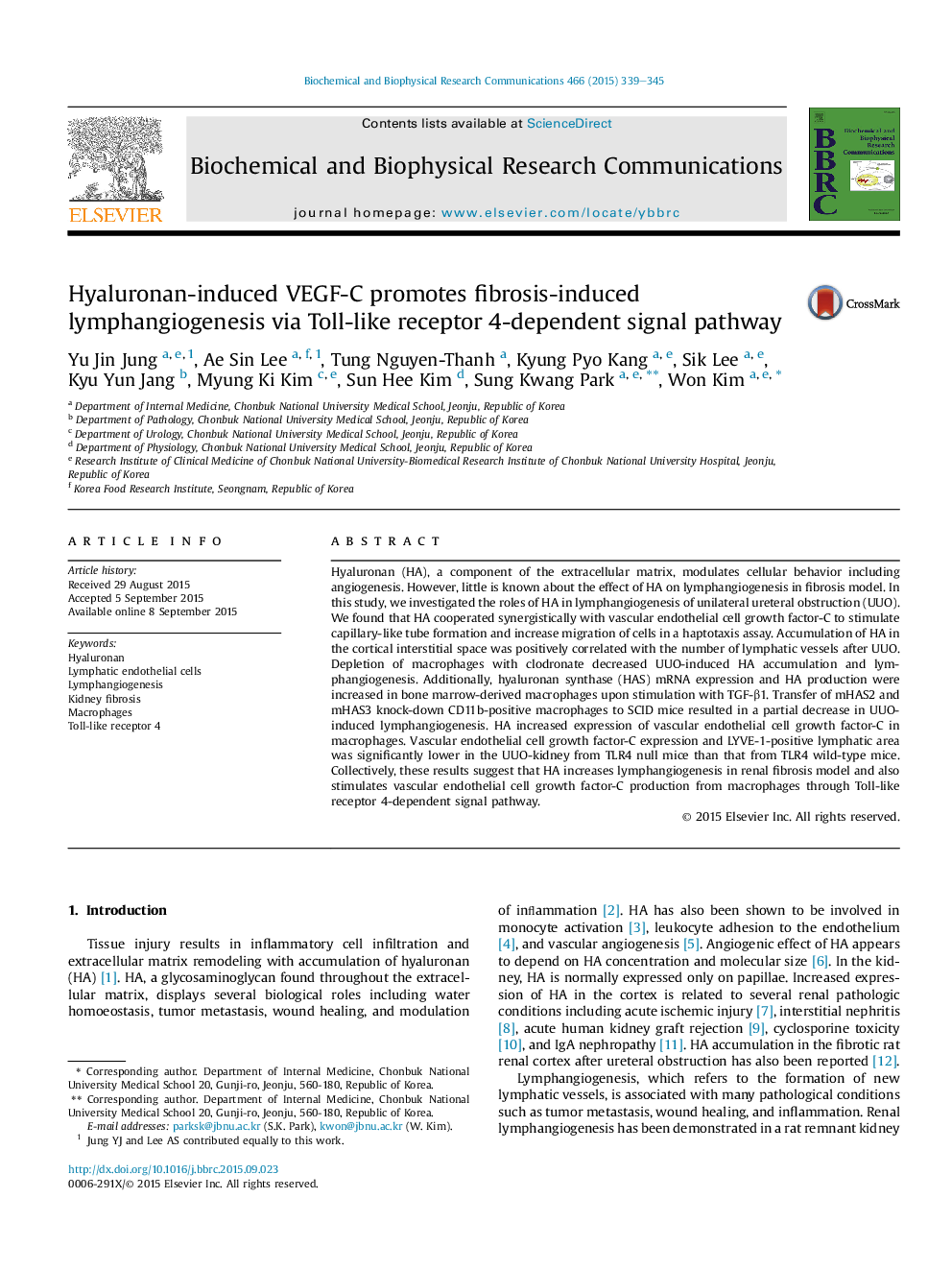| Article ID | Journal | Published Year | Pages | File Type |
|---|---|---|---|---|
| 10750791 | Biochemical and Biophysical Research Communications | 2015 | 7 Pages |
Abstract
Hyaluronan (HA), a component of the extracellular matrix, modulates cellular behavior including angiogenesis. However, little is known about the effect of HA on lymphangiogenesis in fibrosis model. In this study, we investigated the roles of HA in lymphangiogenesis of unilateral ureteral obstruction (UUO). We found that HA cooperated synergistically with vascular endothelial cell growth factor-C to stimulate capillary-like tube formation and increase migration of cells in a haptotaxis assay. Accumulation of HA in the cortical interstitial space was positively correlated with the number of lymphatic vessels after UUO. Depletion of macrophages with clodronate decreased UUO-induced HA accumulation and lymphangiogenesis. Additionally, hyaluronan synthase (HAS) mRNA expression and HA production were increased in bone marrow-derived macrophages upon stimulation with TGF-β1. Transfer of mHAS2 and mHAS3 knock-down CD11b-positive macrophages to SCID mice resulted in a partial decrease in UUO-induced lymphangiogenesis. HA increased expression of vascular endothelial cell growth factor-C in macrophages. Vascular endothelial cell growth factor-C expression and LYVE-1-positive lymphatic area was significantly lower in the UUO-kidney from TLR4 null mice than that from TLR4 wild-type mice. Collectively, these results suggest that HA increases lymphangiogenesis in renal fibrosis model and also stimulates vascular endothelial cell growth factor-C production from macrophages through Toll-like receptor 4-dependent signal pathway.
Keywords
Related Topics
Life Sciences
Biochemistry, Genetics and Molecular Biology
Biochemistry
Authors
Yu Jin Jung, Ae Sin Lee, Tung Nguyen-Thanh, Kyung Pyo Kang, Sik Lee, Kyu Yun Jang, Myung Ki Kim, Sun Hee Kim, Sung Kwang Park, Won Kim,
